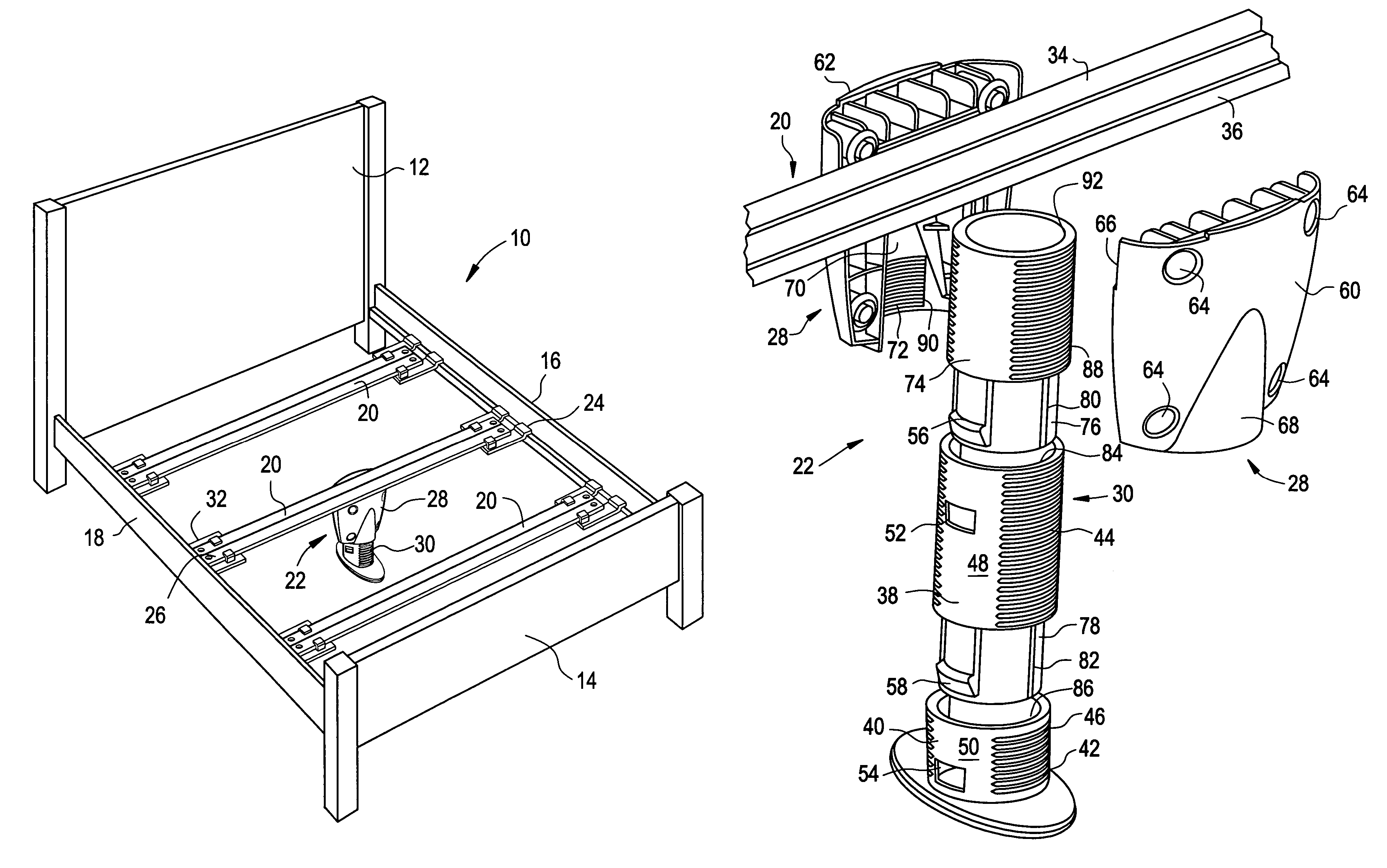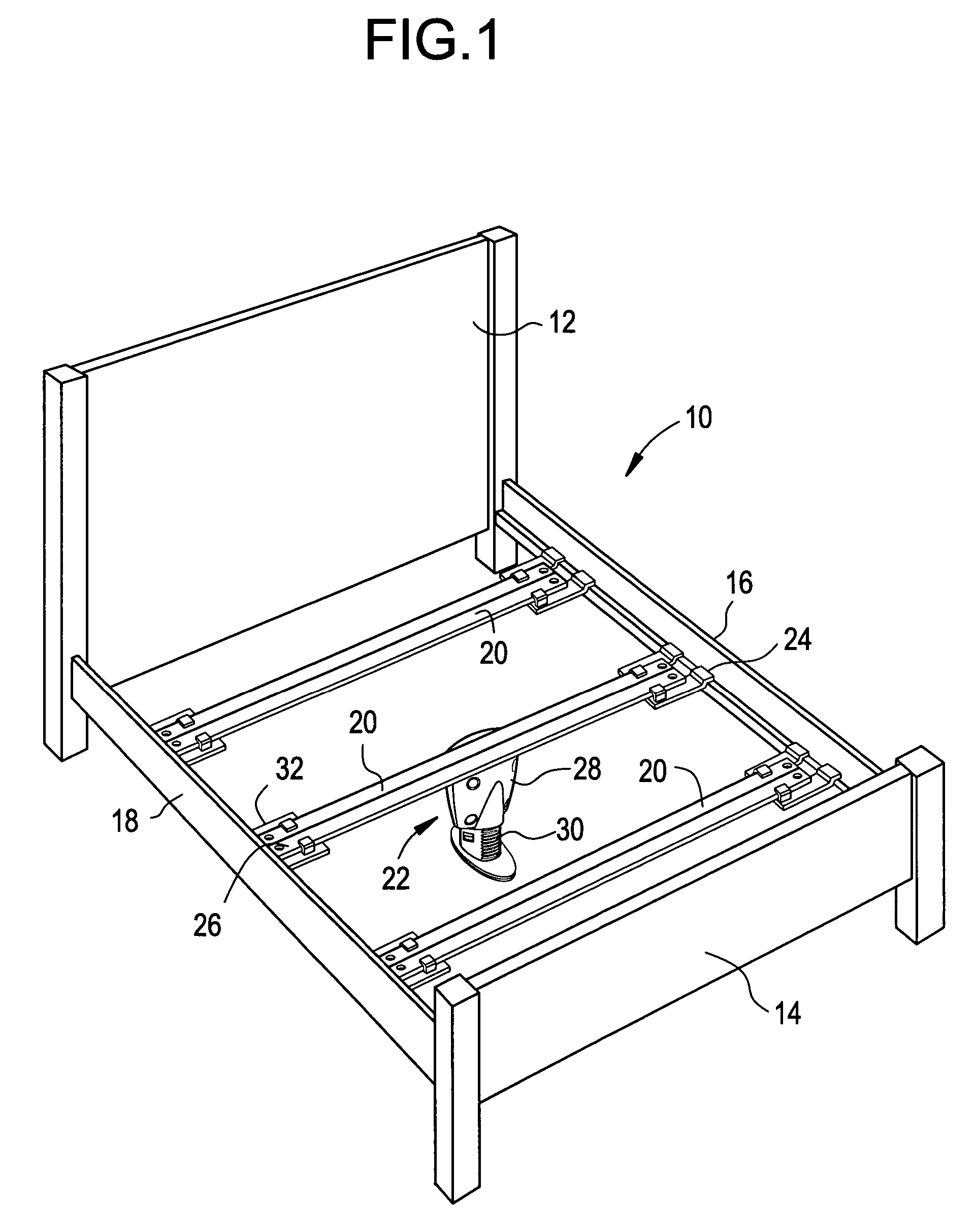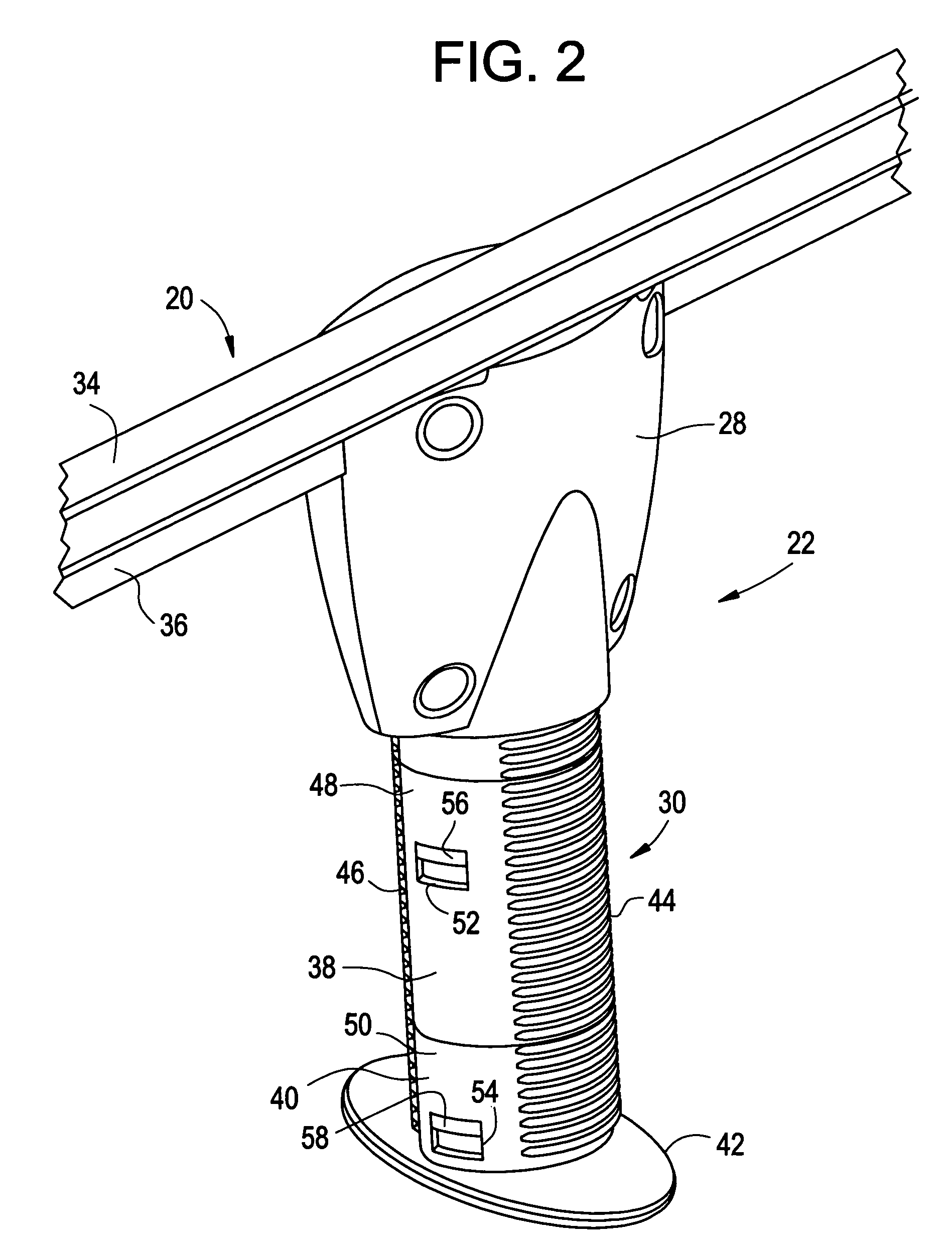Support member for a bed frame
a support member and bed frame technology, applied in the field of support members, can solve the problems of difficult adjustment of the the damage of the l-shaped angle iron support member that is not particularly large, and the difficulty of conventional legs that extend downwardly from the angle iron support member to achieve the proper height of the support member. achieve the effect of expanding the leg
- Summary
- Abstract
- Description
- Claims
- Application Information
AI Technical Summary
Benefits of technology
Problems solved by technology
Method used
Image
Examples
Embodiment Construction
[0027]Referring now to FIG. 1, there is shown a perspective view of a bed frame 10 and which includes a head board 12, a footboard 14 and two parallel side rails 16, 18 both of which are shown to be wooden side rails. A bed frame 10 is used for illustrative purposes, it being seen that bed rails could also make use of the present invention. To make up the bed frame 10, there are also support members 20 that span between the parallel side rails 16, 18 and are affixed thereto. Leg assemblies 22, only one of which is shown, are affixed to the support member 20, generally about midway between the side rails 16, 18, or, alternatively, between the ends 24, 26 of the support member 20. The leg assembly 22 shown, is affixed to the support member 20 and extends downwardly therefrom to contact the underlying floor on which the bed frame 10 rests in order that the floor provide the necessary support for the support member 20. That support is, of course, necessary inasmuch as the support member...
PUM
 Login to View More
Login to View More Abstract
Description
Claims
Application Information
 Login to View More
Login to View More - R&D
- Intellectual Property
- Life Sciences
- Materials
- Tech Scout
- Unparalleled Data Quality
- Higher Quality Content
- 60% Fewer Hallucinations
Browse by: Latest US Patents, China's latest patents, Technical Efficacy Thesaurus, Application Domain, Technology Topic, Popular Technical Reports.
© 2025 PatSnap. All rights reserved.Legal|Privacy policy|Modern Slavery Act Transparency Statement|Sitemap|About US| Contact US: help@patsnap.com



